In the ‘90s, we went on a family vacation to Kodaikanal. Ooty and Kodai were the two hill-stations one travelled to from Madras. My understanding of their geography and location was terrible. The only maps I remembered using were for countries and continents; maybe my own state did not require that much thought, or maybe we weren’t the kind of family that pored over maps before travelling. In my mind, Ooty and Kodai sat in some distant mountains, like two glittering (and cold) constellations.
When we arrived in Kodaikanal, I was struck immediately by the lush green canopies. I was also impressed by how dark the place was—a darkness not caused by the absence of sun, for we were visiting just around summer, but by the presence of the trees and plants.
On this visit, I am struck again by the diversity of plants here. It isn’t just the tall trees. There are also ferns and lianas on the trees, creepers blanketing the walls, bushes and wildflowers finding and filling the spaces, even the gaps between the pavement and the tar. I am more plant-aware1 than I used to be, but here, even in small patches there are simply too many things for me to mark in my visual memory.
We go for a walk with Vijay, a well-known naturalist here, and he shows us things that we have missed completely. An orange berry that tastes like part-chilli and part-tomato. Yellow Raspberries. Wild Jasmine. Tamarillo or Tree-Tomato. Angel’s Trumpets or Dhatura.
(Of course, there is the invasive Lantana everywhere but, at least to my untrained eye, it doesn’t seem to overpower the other species.)
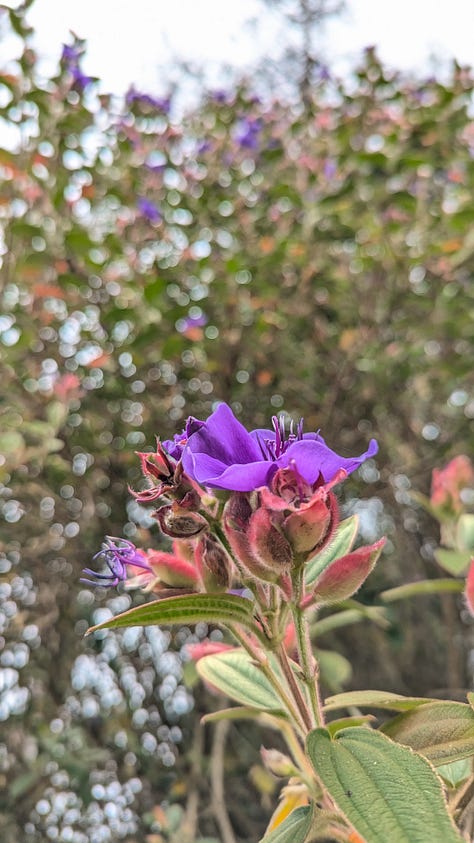
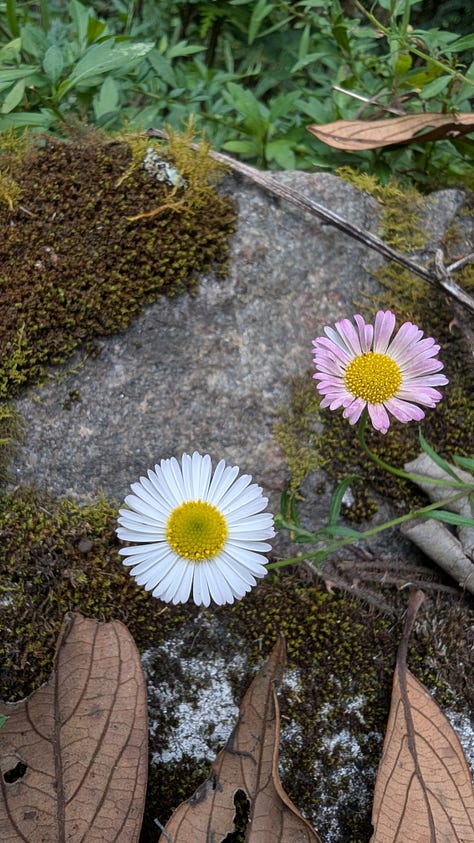
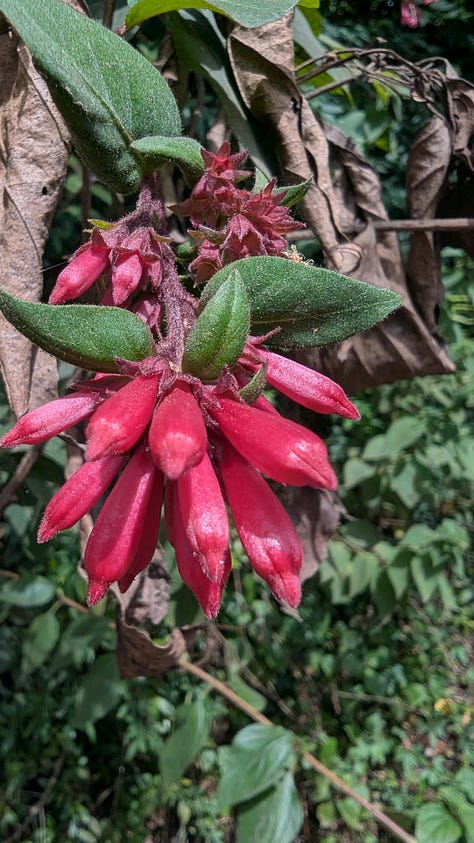
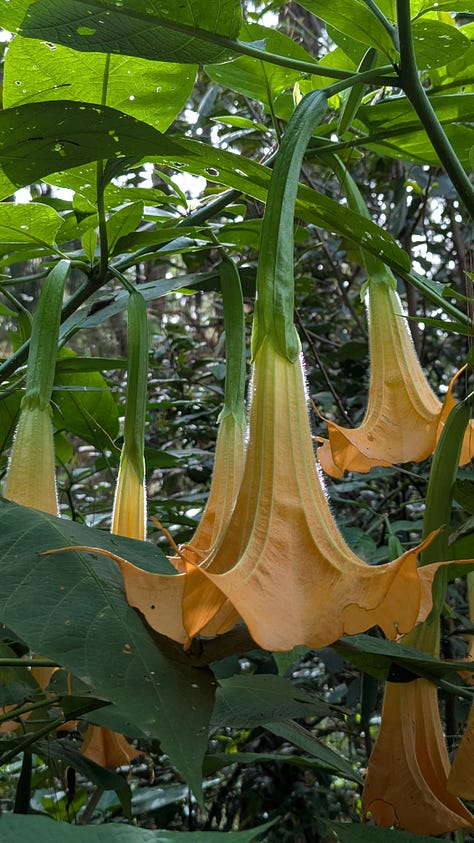
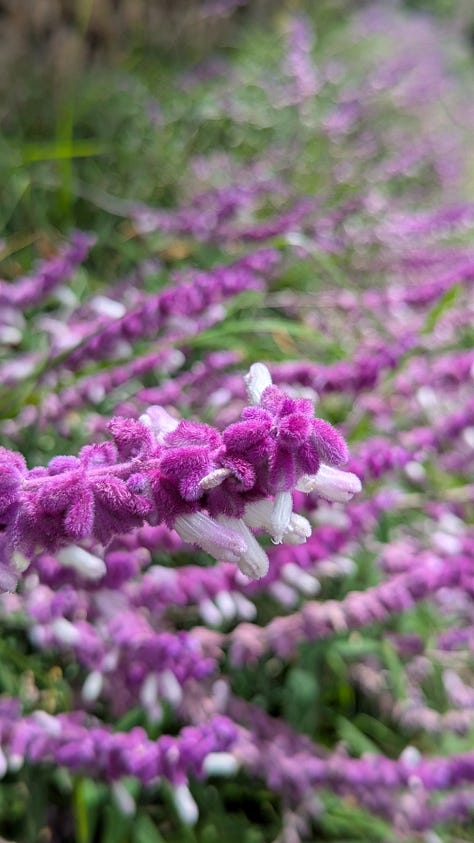
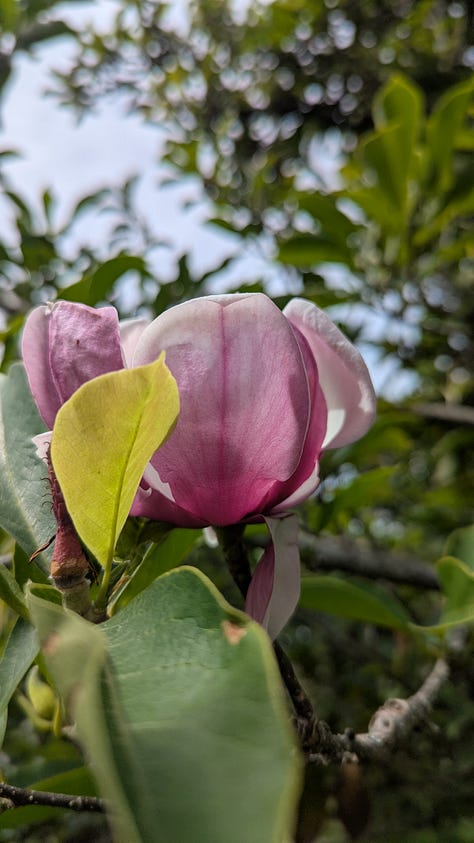
I find I am in love with a bell-like pink flower that I have seen abundantly draped over roadside trees. He tells me it is a wild passionfruit variety, and I later look it up to find that it is Banana Passionfruit (Passiflora mollissima).
All this is just near the town, where native species are actually much fewer than those introduced by the British. The big eucalypts, pines and acacias that define the Kodaikanal tourist-scape are all introduced. Entire native forests were replaced in those times.
Another day, we are driving to the beautifully named Berijam Lake in the middle of a reserve forest, seeking to see more pristine habitats. Our cab driver, Sekar, stops at a viewpoint overlooking the Mathikettan Shola (“Solai” in Tamil) forest. Vijay had told us that these native Sholas look like dense forests of broccoli, in comparison to the eucalyptus towers of the town. There is a beauty to this canopy that is hard to capture on my phone.
The Mathikettan is a forest of mysteries and legends. Its name means “mind confuser” and, it is true, they say, that once you walk in there, you start to lose your senses. People have died in there, they say. What do you think? Is this true? I ask Sekar. He applies his rational mind to it. It’s the plants, he says. Within those canopies are scores of medicinal plants, herbs only known to very few. If you or I wander in there, we will immediately be hit with this dense air. Imagine, Sekar says, if you had an array of tablets—for headache, colds, fevers—and you were made to swallow all of them at once. What would your state be? It is the same inside Mathikettan. From ant to seed, everything there contains toxins. Plus, there is no sunlight in this forest, he adds, and I think of the darkness in my first Kodaikanal memory. Even if you had the willpower to regain your senses, you would not know how to get out. Which way is ahead? Which way is behind? Is it afternoon? Is it dusk? It would be too dark to tell.2
Sekar points to another part of the Shola and talks about an Amman shrine there that no one is allowed to worship at. Oru bayangaramaana azhagu, he says. A terrifying beauty.
I remember a line from the superb Kaatrinile Varum Geetham3 (“Song on a wind”):
Pattamarangal thalirkkum geetham / Pannoli pongidum geetham
Kaattu vilangum kette mayangum madhuramohana geetham
The song that makes the deadwood bloom / The song that brims with melody
The honeyed song that makes wild animals swoon
On the way back to town, I think of what it means to lose one’s senses and then to lose them in the wild. Sensory overload means that you feel too much. Too many fragrances, too many dark greens or leaf shapes maybe, flowers and insects that sting you when you touch them. But a loss of senses means something else. A destabilisation, an upturning of everything you know. Not knowing where you are in the world.
Would I lose memory too?
I imagine each scene from my life evaporating up into the stamens of bell-like flowers, or dropping down into exposed roots on the forest floor. Nothing ahead, nothing behind. What would be left? A wiped-out me, a blank-slate me, a me before people and cities and education. What if that wiped out my anxieties too?
Here, among the creepers and wildflowers and berries and animals, I might actually live “fearless of ever finding open land”.
Plant Awareness is the opposite of “Plant Blindness”, a term coined in 1999 by American botanists James Wandersee and Elisabeth Schussler, who defined it as “the inability to see or notice the plants in one’s own environment.”
More about the Mathikettan in the excellent Kodai Chronicle











So intensely evocative and visceral, Suchi...I have been meaning to visit this region for long, hopefully will do soon
What a delightful meditation, Suchi! I could feel the green. Lovely pics too!